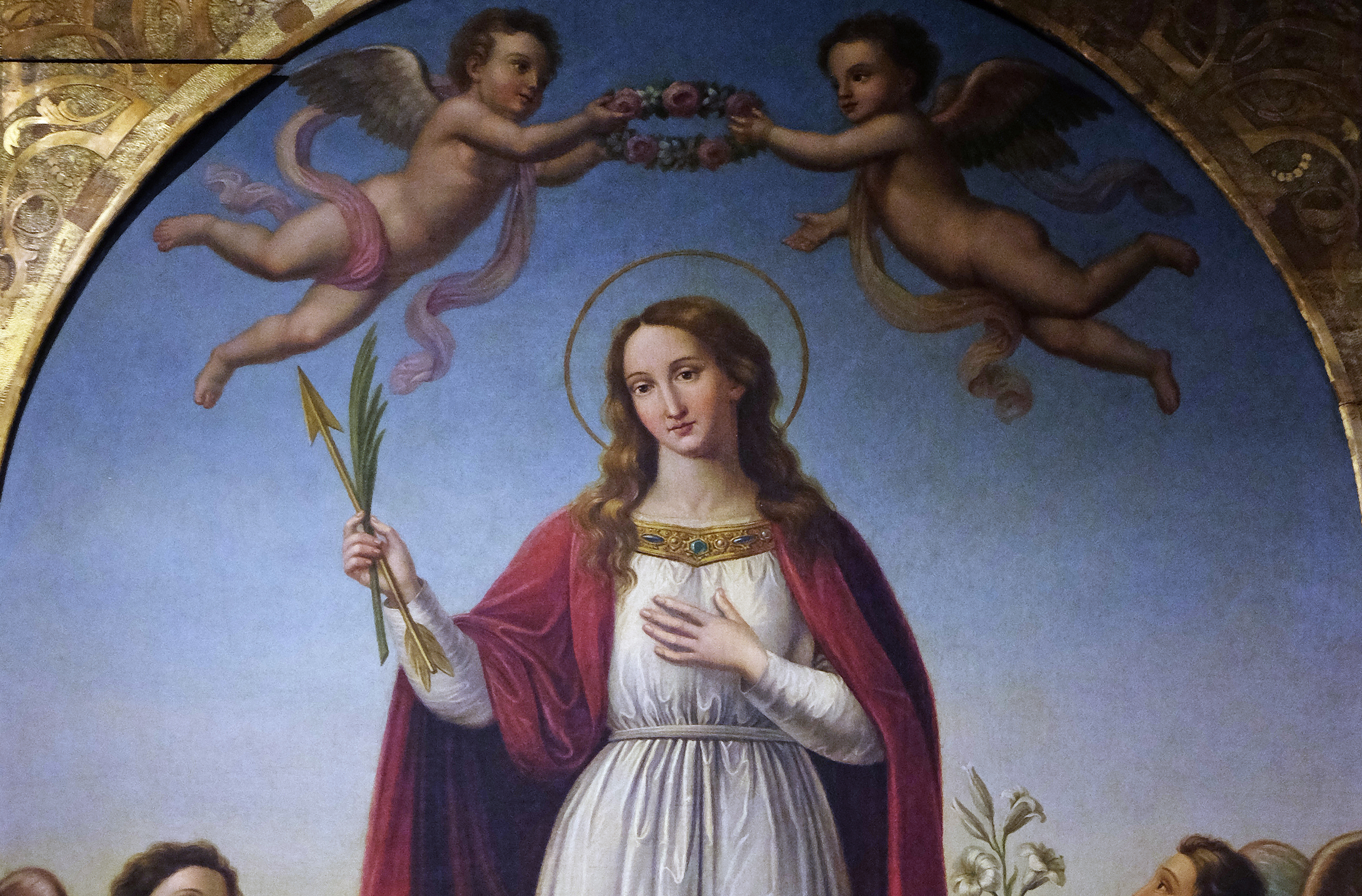Saint Philomena was born in the third century, yet her remains were not discovered until the nineteenth century, when she was virtually unknown to the Church. How can this be? Father Jason Kulczynski, National Director in the USA for the Archconfraternity of Saint Philomena in the United States, joined Drew Mariani to share the story of this great young saint of the Church.
“She died in Rome and was buried in the Catacombs and was kind of left there until an archaeological excavation in the nineteenth century. And they found this tomb that was sealed with some tiles like all of them were, it’s sort of like the modern gravestone that tells you something about the person. And it said on the stones, Pax tecum, Filumena, or ‘peace be with you, Philomena.’ There were some arrows and an anchor, and there were some familiar symbols like the lily, a symbol of virginity, and the palm branch, a symbol of martyrdom, and so they knew when they found it that they were onto something, that it was the tomb of a virgin martyr. The other symbols didn’t make sense immediately, but we found out later that they were the means of her attempted execution by the Emperor Diocletian,” says Fr. Kulczynski.
Even after searching the Vatican records, there was nothing known about the saint, “and so her remains were taken to the place where all of the remains of the early martyrs were in the Vatican archives—in the depository of sacred relics I think—and they remained there until a priest from Mugnano del Cardinale had noticed that his parish church had sort of grown weak in virtue…he thought that if he could have a shrine, the relics of a martyr, someone who gave their life for their faith, and someone who had not grown weak but stood strong in the face of even torture and death, that he could revive the faith of his people,” explained Fr. Kulczynski. When he got to Rome and requested the relics of a martyr, he was offered the relics of St. Philomena. “And the story is that at first he didn’t want them because nothing was known about her, and how would he promote and unknown saint?” But in the end, he took the relics of Saint Philomena and made the journey back to his village.
On the journey, they heard knocking coming from under the carriage where the relics were being kept for the journey, and after bringing the relics up into the carriage, the knocking stopped. “To this day, it’s become one of the signs of her, that she’s trying to get your attention or maybe that you’re in some spiritual danger. People still hear knocking.”

